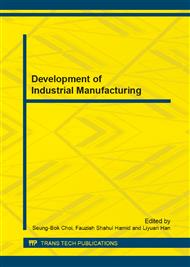p.691
p.695
p.702
p.707
p.711
p.715
p.719
p.723
p.727
Image Fusion Algorithm Based on Contrast Pyramid and its Performance Evaluation
Abstract:
Contrast pyramid algorithm is put forward in this paper. The human visual system is sensitive to contrast information of image, so contrast pyramid algorithm would outstanding the contrast of image. The algorithm consists of creation process of Gauss Pyramid, the process of creating contrast Pyramid and reconstruction process of clear image. Simulation by MATLAB was completed in multi-focus image, multi-modality image and color image. Objective evaluation index such as mean, standard deviation, entropy and average gradient was calculated Simulation results and index show that the contrast pyramid algorithm has advantage of projecting the contrast of image, especially in color image fusion.
Info:
Periodical:
Pages:
711-714
Citation:
Online since:
February 2014
Authors:
Price:
Сopyright:
© 2014 Trans Tech Publications Ltd. All Rights Reserved
Share:
Citation:


